There are many very effective and safe methods of contraception that are ideal for people with heart conditions – however some are more suitable than others.
This may depend on your own choice, heart condition, other health problems, or medications.
If you have a heart condition, the answers to the following questions are worth considering:

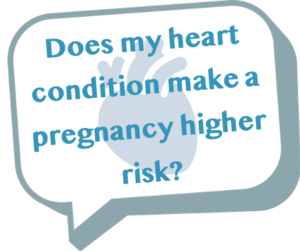
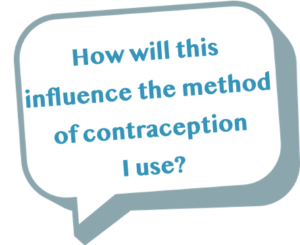
It’s important to talk to your healthcare professional about what options may be suitable for you or if you are having any issues with your method or any problems with sex.
In Scotland, contraception is free.
Maintaining your sexual and reproductive health is also important. This page will go in to more detail about how you can do this.
Please note: where this page talks about safety of contraceptive methods this is only in the context of your heart condition. If you have other medical conditions please speak with your GP/sexual health clinic about the safety of your contraceptive choice.
‘Typical use’ effectiveness of a method of contraception is based on what generally happens in real life.
Contraception
How do they work?
Contraception works in different ways depending on the type. As well as reducing the risk of pregnancy, they can also have many other benefits such as reducing heavy bleeding or reducing the risk of sexually transmitted infections (STIs).
The following are known as long acting reversible contraception (‘LARC’) methods, which don’t rely on you having to remember to take or use them to be very effective:
- Progestogen-only implant
- Hormonal intrauterine contraception (also known as the ‘hormonal coil’ or IUS)
- Non-hormonal intrauterine contraception (also known as the ‘copper coil’ or IUD or emergency coil)
- Progestogen-only injectable
There are a whole range of other contraceptive methods that women often choose. These are effective too.
- Progestogen-only (1 hormone) pill
- Combined hormonal contraception (2 hormones)
- Pill
- Patch
- Ring
- Condoms – these can also prevent the spread of sexually transmitted infection.
Is it free?
Yes, you can get free contraception, including emergency contraception, from most general practices and sexual health clinics. Emergency contraceptive pills are available for free from some pharmacies.
Emergency contraception
Where can I access emergency contraception?
You can get the emergency contraceptive pill and the intrauterine device for free from:
- a GP practice that provides contraception (some GP practices may not provide the IUD)
- a sexual health clinic
- some young people’s clinics
You can get the emergency contraceptive pill free from:
- pharmacies
- some minor injuries units and Accident & Emergency departments
What types of emergency contraception are available?
There are two main types of emergency contraception- the copper IUD (coil) and hormone pills.
Copper intrauterine device (IUD) – ‘non-hormonal coil’
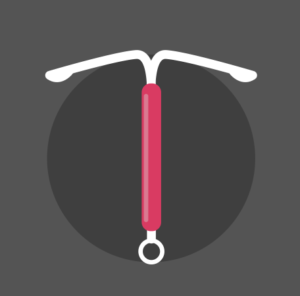
This is the most effective method of emergency contraception (99% effective) and is 10 times more effective than the emergency pills.
You can have an emergency IUD fitted up to 5 days after unprotected sex (and sometimes even longer).
It is usually easy to insert and is suitable for women of any age.
For emergency contraception it needs to stay inside your womb at least until your next period but you might decide to keep it as your main method of contraception (which can last between 5 and 10 years). It is suitable for breastfeeding women.

Your healthcare professional may recommend having this fitted in a hospital setting, rather than your GP surgery or sexual health clinic. This is because there is the risk of a fainting episode with this procedure. Patients with heart conditions such as Eisenmenger’s syndrome, single ventricle circulation (Fontan), severely impaired heart function, tachycardias and pre-existing bradycardias may not tolerate a fainting episode. If this is the case, often you will be observed for a while after the short procedure.
Progestogen pill (e.g. LevonelleTM)
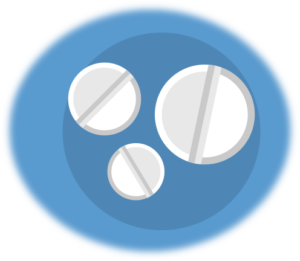
This is also known as the ‘morning after’ pill because it is most effective if it is taken within 24 hours of unprotected sex. It works by delaying the release of an egg (if this has not happened already).
It can be taken up to 3 days after unprotected sex and will get less effective the longer you wait to take it.
It is suitable for breastfeeding women and will not affect the baby or breast milk supply.
You can get this pill free of charge from pharmacies in Scotland if you are registered with a GP, or from your local sexual health clinic.
Ulipristal acetate (e.g ellaOneTM)
This pill can be taken up to 5 days after unprotected sex. It works by delaying the release of an egg. It is more effective than progestogen emergency contraception. You can get ellaOneTM free of charge from pharmacies in Scotland if you are registered with a GP, or from your local sexual health clinic.
Hormonal methods of contraception make ellaOneTM less effective, so you should not use any hormonal methods of contraception for 5 days after taking ellaOneTM.
Breastfeeding women are advised to discard breast milk for 7 days after taking ellaOneTM.
More information can be found at:
NHS inform – emergency contraception
Emergency contraception information
Progestogen-only implant

The implant is a small rod, about the size of a bendy matchstick that is inserted under the skin of your upper arm. Local anaesthetic is used to numb the area of skin.
The implant releases a hormone called progestogen that prevents your ovaries from releasing eggs and thickens your cervical mucus, which helps to block sperm from getting to the egg in the first place.
It can still be fitted if you are taking anticoagulants such as warfarin but may need to be fitted at a specialist clinic.
Advantages
- Lasts for three years
- Quick return to fertility when removed
- May have lighter periods
- Suitable for breast feeding women
- Fit it and forget it
Disadvantages
- Possible irregular periods (or no periods)
Effectiveness
The progestogen implant is extremely effective. It has a failure rate of 5 in 10,000 women
More information about the contraceptive implant
Hormonal intrauterine contraception

The hormonal IUS is a little t-shaped device that is placed in your uterus (womb). It is also known as the ‘hormonal coil’ or IUS.
It prevents pregnancy by keeping the lining of the womb thin, and often women have lighter or no periods.

Your healthcare professional may recommend having this fitted in a hospital setting, rather than your GP surgery or sexual health clinic. This is because there is the risk of a fainting episode with this procedure. Patients with heart conditions such as Eisenmenger’s syndrome, single ventricle circulation (Fontan), severely impaired heart function, tachycardias and pre-existing bradycardias may not tolerate a fainting episode. If this is the case, often you will be observed for a while after the short procedure.
It can still be fitted if you are taking anticoagulants such as warfarin but may need to be fitted in a hospital setting, depending on the medication, dose and target range.
Advantages
- Lasts for up to five years
- Fit it and forget it
- Very low dose of safe hormone
- Quick return to fertility when removed
- Periods/bleeding will probably be lighter (or bleeding might stop altogether)
- Suitable for breastfeeding women
- It can be inserted as soon as a baby is born (in the labour ward) or during a caesarean section
Disadvantages
- Possible irregular bleeding which take a few months to settle
- Must be inserted by a clinician, possibility in a hospital setting
Effectiveness
An IUS is an effective method of contraception. It has a failure rate of 2 in 1000 women.
More information about the IUS
Non-hormonal intrauterine contraception

The copper IUD is a little t-shaped device that is placed in your uterus (womb) and alters the way sperm move. This prevents them from fertilising an egg.
This type of IUD has a small amount of natural, safe copper. It’s 100% hormone free and keeps periods regular.
It is also known as the ‘copper coil’, IUD or emergency coil.

Your healthcare professional may recommend having this fitted in a hospital setting, rather than your GP surgery or sexual health clinic. This is because there is the risk of a fainting episode with this procedure. Patients with heart conditions such as Eisenmenger’s syndrome, single ventricle circulation (Fontan), severely impaired heart function, tachycardias and pre-existing bradycardias may not tolerate a fainting episode. If this is the case, often you will be observed for a while after the short procedure.
It can still be fitted if you are taking anticoagulants such as warfarin but may need to be fitted in a hospital setting, depending on the medication, dose and target range.
Advantages
- Lasts for up to 5 or 10 years (depending on type of copper IUD)
- Can be removed easily
- No hormones
- Fit it and forget it
- Continued regular periods
- Quick return to fertility when removed
- Suitable for breastfeeding women
- It can be inserted as soon as a baby is born (in the labour ward) or during a caesarean section
Disadvantages
- Possible heavier, crampier periods
- Must be inserted by a clinician, possibility in a hospital setting
Effectiveness
An IUD is an effective method of contraception. It has a failure rate of 8 in 1000 women.
More information about the IUD
Progestogen-only injectable (‘jag’)
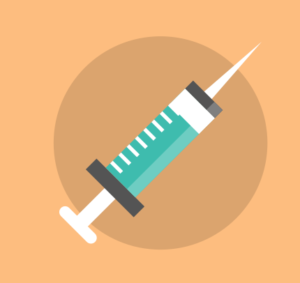
The ‘jag’ is just what it sounds like, an injection that keeps you from getting pregnant. The jag contains progestogen, a hormone that prevents your ovaries from releasing eggs. It also thickens your cervical mucus, which helps to block sperm from getting to the egg in the first place.
It can still be used if you are taking anticoagulants such as warfarin but may need to be timed depending on the medication, dose and target range.
Advantages
- Lasts for 3 months
- May have lighter or no periods
- Suitable for breastfeeding women
- There is also a new injection which you can learn to give yourself every 3 months after some training from a healthcare professional.
Disadvantages
- Must see a health professional every three months for the injection (unless you chose the injection that you can give to yourself)
- Possible delay in return to fertility
- Possible irregular periods
Effectiveness
The progestogen-only injectable is an effective method of contraception. It has a failure rate of 6 in 100 women.
More information about the contraceptive injection
Progestogen-only pills (POP)
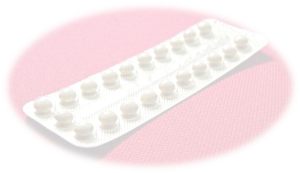
These pills contain only one hormone, progestogen. This method suits women who want to take a pill but who cannot have oestrogen. The pills are taken every day.
There are two kinds of progestogen only pill: the traditional ones that thicken cervical mucus and stop sperm reaching the egg and the newer ones that keep the ovaries from releasing an egg.
Advantages
- Reversible after stopping
- Suitable for breastfeeding women
- Safe for women who cannot have oestrogen
- May have no bleeding
Disadvantages
- May have irregular bleeding
- Must remember to take at the same time each day
Effectiveness
With ‘typical use’ the POP fails for 9 in 100 women.

This means that around 1 in 11 women using the POP will have an unplanned pregnancy.
More information about the progestogen-only pill
Combined hormonal contraception (CHC)
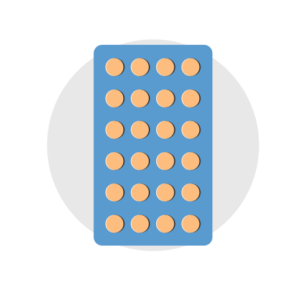
These methods contain two hormones, oestrogen and progestogen, that prevent your ovaries from releasing an egg. Usually this is a pill that you take at the same time every day. There are lots of different kinds of pills on the market.
There are also patches or vaginal rings which work just like the pill.
Combined hormonal contraception (CHC) can’t be used with some health conditions, so it is important to discuss this with your healthcare professional. There are several heart conditions that make the CHC unsuitable. These include but are not limited to:
- some congenital heart disease conditions
- impaired heart function
- mechanical heart valve
- heart attack
- risk factors for heart attack
- some heart rhythm disorders
- high blood pressure
- pulmonary hypertension
- complicated heart transplant
- patient history or family history of blood clots

If you have a heart condition, please check with your healthcare specialist before starting CHC.
There is a small increased risk of blood clots, myocardial infarction (heart attacks) and stroke while using CHC. This risk is dependent on your own health condition and the type of CHC used.
Advantages
- Shorter, lighter and less painful periods
- Reversible after stopping
- May help with acne, heavy and painful periods
Disadvantages
- May have irregular bleeding, usually improves over time
- Must remember to take at the same time each day
- Some women cannot take oestrogen for health reasons
Effectiveness
With typical use the CHC fails for 9 in 100 women.

This means that around 1 in 11 women taking the CHC will have an unplanned pregnancy.
More information about the combined pill
More information about the contraceptive patch
More information about the contraceptive vaginal ring
Condoms (Male & Female)

Condoms are called barrier methods of contraception and they work by stopping the sperm meeting an egg.
An external (male) condom is made of very thin latex (rubber) or polyurethane (plastic) which is put over an erect penis.
An internal (female) condom is made of very thin polyurethane. It is inserted into the vagina and loosely covers it.
Advantages
- You only need to use them when you have sex
- They protect both partners from some sexually transmitted infections, including HIV.
- There are no hormonal side-effects from using condoms
- Male condoms come in different types, shapes and sizes
- Male condoms are widely available
- A female condom can be put in any time before sex
Disadvantages
- Less effective than some other methods at preventing pregnancy
- Some find condoms can interrupt sex. However, you can make applying condoms more fun by incorporating it into your sexual activities. Be creative!
- A male condom can sometimes slip off or split. Always make sure you use the correct size.
- Latex free condoms are now available if you have a sensitivity to latex.
Effectiveness
Condoms have a ‘typical use’ failure rate of 15 in 100 (male) and 21 in 100 (female).

This means that using male condoms, just under 1 in 7 women will have an unplanned pregnancy

Using a female condom, around 1 in 5 women will have an unplanned pregnancy.
Natural family planning/fertility awareness methods

Natural family planning (fertility awareness) works by observing and recording your body’s different natural signs or fertility indicators on each day of your menstrual cycle.
The main fertility indicators are:
- your body temperature
- cervical secretions (cervical mucus)
- the length of your menstrual cycle
Breast feeding
You are less likely to get pregnant if:
- your baby is less than six months old and
- your periods have not come back and
- you are fully breastfeeding day and night with no bottle feeds at all.
Advantag#es
- Doesn’t involve procedures or medications
- No hormonal side effects
Disadvantages
- It takes 3–6 menstrual cycles to learn effectively.
- You have to keep daily records.
- Some events, such as illness, lifestyle, stress or travel, may make fertility indicators harder to interpret.
- You need to avoid sex or use male or female condoms during the fertile time.
- Doesn’t protect against sexually transmitted infections (STIs).
Effectiveness
All natural family planning methods can typically fail for 24 in 100 women.

This means that almost 1 in 4 women will have an unplanned pregnancy using natural family planning methods.
More information on natural family planning
Sterilisation (Female)
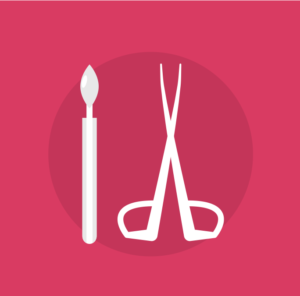
This involves blocking the fallopian tubes so that sperm cannot get through to meet an egg. There are different ways of doing this. You will need to have it done in hospital, and it is often done under a general anaesthetic. It can also be done at the same time as a caesarean section.
Remember that the intrauterine methods (hormonal IUS and copper IUD) and implant mentioned above are more effective than female sterilisation.
Advantages
- Permanent
- No change in periods
Disadvantages
- Higher failure rate if done during caesarean section
- Irreversible
- Must be certain you never want another pregnancy
- Surgical procedure
- Might require general anaesthetic
- Risk of complications
Effectiveness
Female sterilisation is an effective method of contraception. It has a failure rate of 1 in 200 women.
Sterilisation (Male)
This involves blocking the tubes (vas deferens) that take sperm from the testicles to the penis. It is a quick procedure done under local anaesthetic. It can be done in a community clinic.
Male sterilisation is more effective than female sterilisation and a much simpler procedure. Remember that the intrauterine methods (hormonal IUS and copper IUD) and implant are very effective, reversible methods.
Advantages
- Permanent
- Fails for 1 in 2,000
- Local anaesthetic
Disadvantages
- Irreversible
- Surgical procedure
- Risk of complications
Effectiveness
Male sterilisation is an effective method of contraception. It has a failure rate of 1 in 2,000 men.
Video explaining the vasectomy process
More information on male & female sterilisation
Unplanned pregnancy
If you think you might be pregnant and are not sure what to do, speak to your healthcare professional. Depending on where you live you may be able to self-referral to your local abortion service, sexual health service or you can speak to your GP.
You can talk to your healthcare professional in confidence about your options, which might include a termination or abortion.
NHS Greater Glasgow & Clyde: https://www.sandyford.org/sexual-health-services/termination-of-pregnancy/
NHS Lanarkshire: https://www.lanarkshiresexualhealth.org/termination/
NHS Ayrshire & Arran: http://shayr.com/pregnancy/
NHS Dumfries & Galloway: https://sexualhealthdg.co.uk/abortion.php
NHS Forth Valley: https://nhsforthvalley.com/health-services/az-of-services/maternity/positive-pregnancy-test/abortion/
NHS Lothian: https://www.lothiansexualhealth.scot.nhs.uk/Pregnancy/Termination/Pages/default.aspx
NHS Fife: https://www.sexualhealthfife.scot.nhs.uk/Index.asp?MainID=29132
NHS Borders: http://www.borderssexualhealth.org.uk/pregnancy/termination-of-pregnancy-top/
NHS Tayside: https://www.sexualhealthtayside.org/sexual-health-relationships/pregnancy/
NHS Highland: https://www.nhshighland.scot.nhs.uk/Services/Pages/SexualHealth.aspx
NHS Western Isles: GP will refer into the mainland – usually Glasgow or Inverness
NHS Orkney: GP will refer into the mainland
NHS Shetland: GP will refer into the mainland https://www.shb.scot.nhs.uk/community/index.asp
Contraception after pregnancy
Having just had a pregnancy you may feel that another pregnancy is the last thing on your mind.
We know that there is a high number of unplanned pregnancies in the first year following a birth.
Discussions about the type of contraceptive you use after pregnancy should start in the antenatal clinic. This will allow access to contraception before you leave the hospital after having a birth.
More information about contraception after pregnancy
Links
- NHS Contraception Choices
- Family Planning Agency – Contraception and sexual health advice – Sexwise
- Contraceptive choices
Sexual & Reproductive Health
Smear Test
The cervical screening test (smear test) is carried out to check your cervix (neck of the womb) for the Human Papilloma Virus (HPV). The aim of the smear test is to help prevent cancer. It is advised that all women eligible and who receive a letter to attend for a smear test do so.
NHS Inform – cervical screening
Sexual health
NHS Inform provides information on sexual health here
